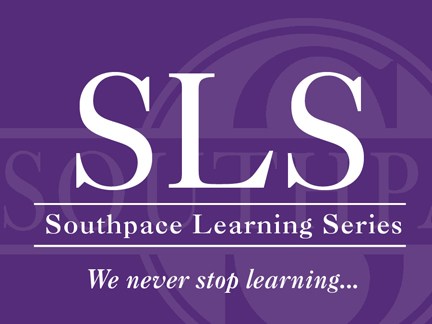Estoppel…SNDA? Are you speaking a foreign language?

By Bryan Holt, CCIM, CLS
The Southpace Learning Series (SLS) is our continuing education program developed in-house to give our team an in-depth understanding of issues facing our clients. Because our clients’ needs continue to evolve, so will we.
At Southpace we are smart enough to “know what we don’t know,” and the subject of our most recent installment of the Southpace Learning Series fit squarely in that category.
We are not attorneys and we don’t give legal advice. Still, we need to understand the role of Estoppels and SNDA documents in our business. The two terms are sometimes lumped together (especially by real estate brokers) when maybe the only thing they share in common is the need for an attorney’s involvement. This is a broker’s perspective on both.
The Estoppel is simply certification of sorts as to the terms of a lease document. Purchasers and Lenders benefit from Estoppels because when an investment property changes hands it is typically in the middle of the lease term for the tenant(s) in the property.
The Purchaser and his banker will request that tenants sign the Estoppel Agreement in order to verify that the terms contained in the lease document are still in effect and are not in dispute.
Typically, the Seller and or his property manager will assist in obtaining signed Estoppel Agreements prior to the sale or refinancing of an investment property. Failure to get an Estoppel could lead to a Tenant disputing the lease terms after the investment sale closes or the Purchaser could inherit a property full of junk leases.
Subordination and Non Disturbance Agreements (SNDAs) are totally different than an Estoppel in that they survive foreclosure and generally benefit the Tenant only.
Most sophisticated Tenants will require the Landlord to have an SNDA signed by the Landlord’s lender prior to lease execution (or within a reasonable time thereafter).
It’s a gross over-simplification, but an SNDA generally has three parts.
- The Subordination part puts the lease ahead of the mortgage.
- Non Disturbance assures the Tenant it can continue to occupy the space under the terms of the lease even after a foreclosure.
- Attornment assures the Lender that the Tenant will honor their obligations under the lease following a foreclosure on the mortgage.
Together these three parts generally assure that the Tenant can keep operating normally unaffected by what might go on between the Landlord and his lender during the term of the lease.
On rare occasions, it might be beneficial to a tenant if there is no SNDA in place. However, best practices call for the LOI to contain a requirement for the Landlord to get an acceptable SNDA signed by his lender.
Most lenders will only sign their own form document, and our experience is that those form documents are generally acceptable to most Tenants.
As banks and investors foreclose on more and more notes coming out of the recent recession, we are seeing the SNDA documents play a much greater role in our client’s business.
Our advice regarding Estoppel and SNDA documents is to talk to an attorney. We did. And now our team is more prepared to serve our clients down the road.







